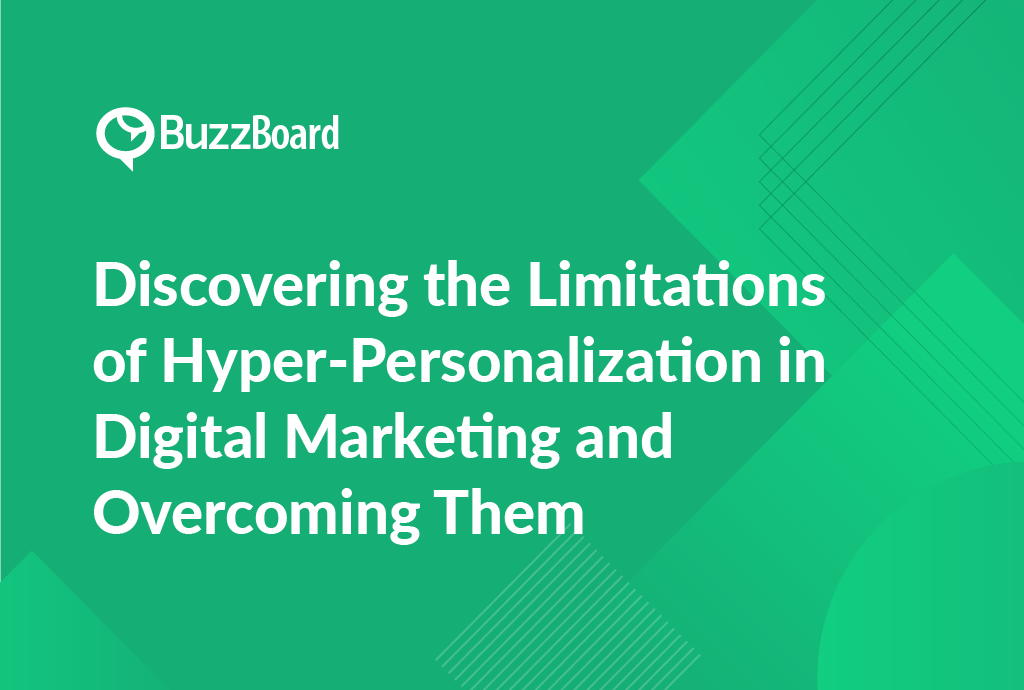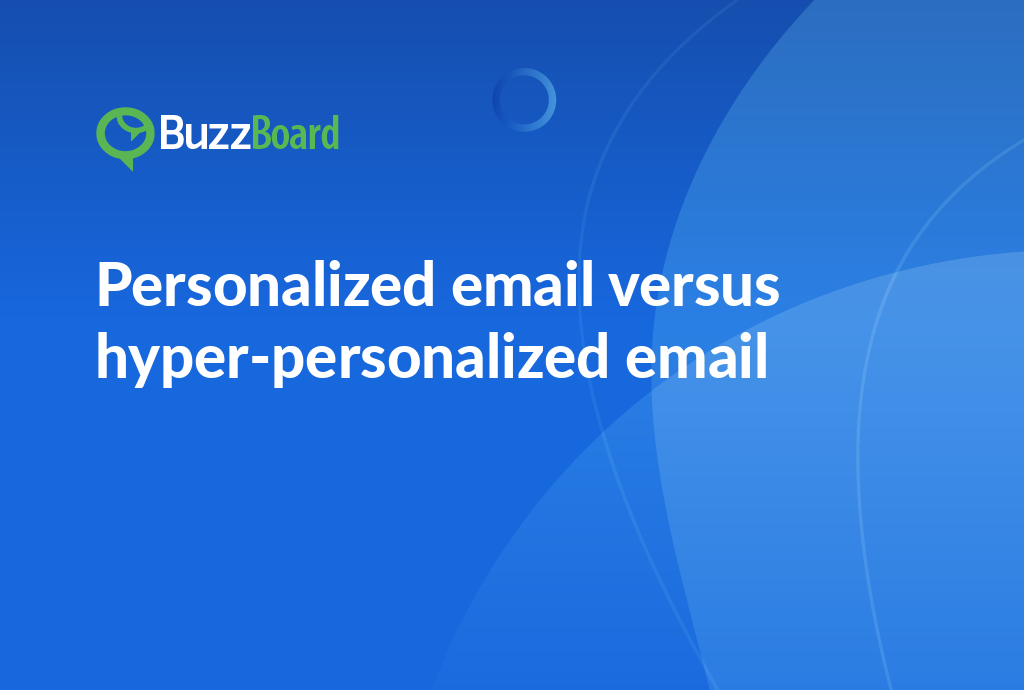Understanding the Drawbacks
Hyper-personalization is a hot topic in the marketing industry, praised for its potential to provide a bespoke customer experience. This technology employs artificial intelligence (AI) and real-time data to produce personalized content, showing significant potential to boost customer engagement. However, there are notable limitations to hyper-personalization.
First, there’s the issue of privacy. As we are becoming more aware of data breaches, excessive use of personal data can prove problematic. Legislation such as the General Data Protection Regulation (GDPR) imposes strict rules on data usage, complicating matters further.
The resource-demanding nature of hyper-personalization presents another limitation. It necessitates substantial investment in technology, data-gathering systems, and a skilled workforce, which may be impractical for smaller businesses. Additionally, scaling hyper-personalization strategies can pose challenges as a business expands.
Though these limitations are genuine, there are also benefits that could counterbalance these drawbacks. Implementing a measured marketing strategy that melds personalization elements with general deals can create an effective equilibrium. Plus, sound data management can help ease privacy apprehensions.
Understanding hyper-personalization’s workings can assist in managing its limitations. It’s a multifaceted process involving customer data collection, behavior pattern analysis, and using that information to customize marketing materials. By skillfully handling these elements, businesses can potentially enjoy the advantages of hyper-personalization without succumbing to its weaknesses.
The Challenges of Hyper-Personalization
Despite the precision and personal touch of hyper-personalization, understanding its challenges will help marketing executives to adopt a balanced approach effectively.
Sales representatives at digital marketing agencies, specifically those targeting local and small businesses, often view hyper-personalization as the holy grail of customer-centric strategies. However, understanding its limitations is key to employing this approach effectively.
Hyper-personalization uses advanced algorithms to analyze user behavior and preferences. By tailoring promotional content to each individual user, it often results in increased conversion rates and customer loyalty. Nevertheless, it’s vital to take into account its limitations. Data privacy and consent represent significant challenges; it’s critical to ensure that proper permissions for data collection are in place. Non-compliance could result in substantial penalties and reputation damage.
Another potential drawback is the accuracy and relevancy of data. Outdated or incorrect data can result in misguided outreach, which could alienate customers. Moreover, hyper-personalization is resource-intensive, it demands specific technology and talent that may not be readily available or affordable for all small businesses.
Despite these challenges, if implemented cautiously, the benefits of hyper-personalization can outweigh the associated risks. Compliance with data privacy regulations, robust data management practices, and strategic investment in technology and resources can mitigate these issues.
Understanding how hyper-personalization works, including its potential pitfalls, is vital for successful integration into marketing strategies. Prioritizing customer privacy and experience can also help address these challenges.
How Does Hyper-Personalization Work?
Hyper-personalization, the application of advanced technologies to deliver uniquely customized services, has greatly transformed the digital marketing industry. By utilizing artificial intelligence (AI) and real-time data, this method crafts personalized content, products, or services for users, increasing customer interaction and conversion rates.
Comprehending how hyper-personalization functions requires a deep understanding of data analysis. AI and machine learning tools analyze large amounts of consumer data such as browsing histories, prior purchases, and even social media behaviors, creating individualized customer profiles. Subsequently, these profiles instruct customized content delivery which directly connects to each customer’s needs and preferences.
Yet, there are constraints to hyper-personalization that digital marketing professionals must tackle. Mainly, data privacy concerns can obstruct the acquisition and application of essential customer details. Latest global privacy rules demand businesses to acquire explicit consent from users before gathering their personal data, a factor that may hinder hyper-personalization initiatives.
Furthermore, the menace of invading customers’ privacy or crossing the creepy line looms large. Over-personalization has the potential to breach customers’ trust, damaging relationships, and leading to lost sales.
Strategically, the key to offset these limitations is careful calibration of personalization in marketing efforts. It necessitates a balance between devising a personalized customer experience and respecting personal boundaries and privacy rights. Armed with a refined understanding of these boundaries and skilled use of data analysis technologies, organizations can effectively leverage the power of hyper-personalization, thereby optimizing their digital marketing endeavors.
As a sales representative focused on small and local businesses, it’s vital to understand these aspects of hyper-personalization to give well-informed suggestions to your clients and forestall implementation pitfalls. Equipped with these insights, you’ll be better prepared to navigate the increasingly complex digital marketing environment.
The Benefits Versus the Limitations
In the world of digital marketing, hyper-personalization is a hot topic. For leaders in digital marketing agencies, it’s vital to understand the benefits and constraints of hyper-personalization to optimize marketing strategies for small and local businesses.
Hyper-personalization is a strategy that leverages data analysis and digital technology to deliver bespoke messages and product offers to consumers. However, it faces significant challenges such as privacy concerns, data accuracy, and the substantial resources required for its implementation.
Despite these challenges, the potential rewards are remarkable. Hyper-personalization can significantly enhance a brand’s reach and engagement by offering benefits that can offset these limitations. Firstly, it provides an in-depth understanding of customer behavior, enabling real-time responses that align with their needs and preferences. Secondly, displaying relevant content boosts customer engagement and loyalty.
Delving further into hyper-personalization showcases its vast potential. Providing personalized experiences at the right time can dramatically improve customer interaction, thus boosting sales. When implemented correctly, it can propel customer engagement rates, significantly improving ROI.
Additionally, with the growth of AI and machine learning technologies, agencies can overcome some of the common challenges of hyper-personalization. Tools are becoming more advanced and simpler to incorporate, making this strategy increasingly accessible for small-sized businesses.
While retail giants like Amazon have utilized hyper-personalization effectively, replicating such a strategy requires an in-depth understanding of hyper-personalization, its benefits that outweigh limitations, and a clear comprehension of the client’s business model.
For digital marketing sales representatives, understanding the complexities of hyper-personalization equips you for conversations with prospective clients looking to maximize their ROI. With a clear understanding of the role and potential of hyper-personalization in modern marketing, you’re able to offer effective, comprehensive solutions to your clients.
Case Studies and Strategies
Hyper-personalization can revolutionize small and local businesses by delivering individualized experiences and marketing messages targeted at the audience at a granular level. However, as sales representatives at digital marketing agencies, it’s crucial to understand the limitations of hyper-personalization and know how to mitigate them.
A significant challenge of hyper-personalization is the potential for violating privacy rights, risking damage to a brand’s reputation and customer trust. Additionally, the enormous volume of data required can be daunting, and incorrect interpretation of this data could result in misguided marketing strategies.
However, hyper-personalization’s benefits can outweigh these restrictions. Balancing personalization with privacy enables businesses to steer clear of infringing on privacy rights. Tactics such as progressive profiling can be used, which involves requesting small amounts of information over time to accurately build a customer profile. This approach not only reduces potential privacy invasion but also enhances data collection accuracy.
To manage the data volume challenge, integrating artificial intelligence can automate data processing and interpretation efficiently. This allows for swift and effective consolidation of extensive customer data, improving hyper-personalization used in digital marketing strategies.









